Consumer Insights and Social tools
Download as ppt, pdf0 likes322 views
Harnessing what's new in a social market.
1 of 65
Downloaded 16 times
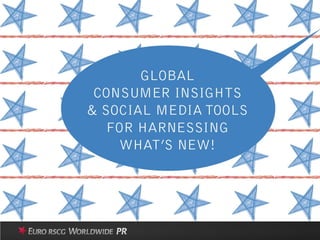


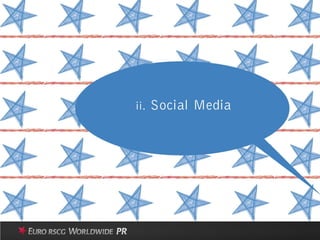
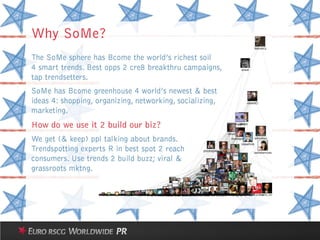

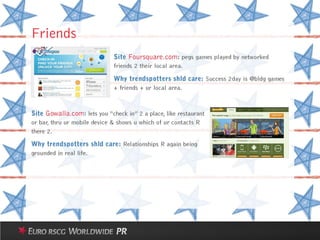


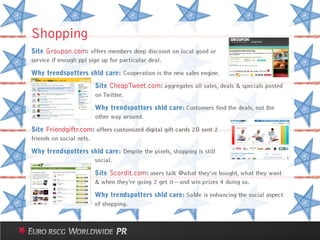
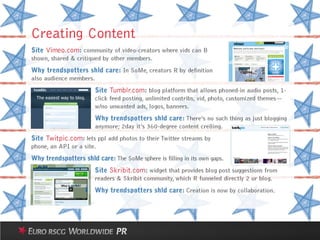


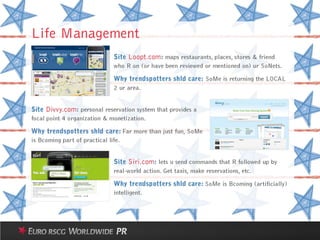
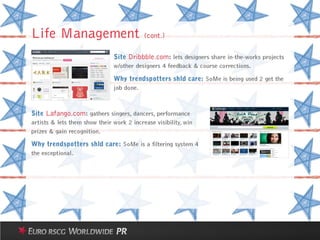


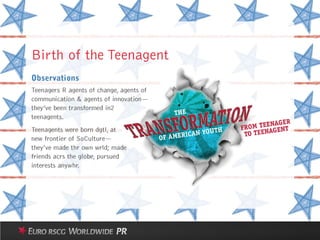
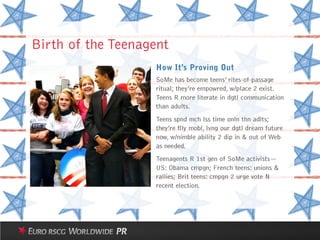

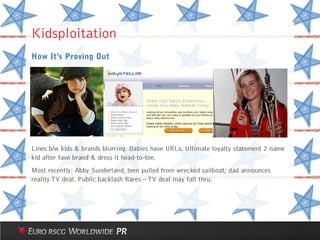
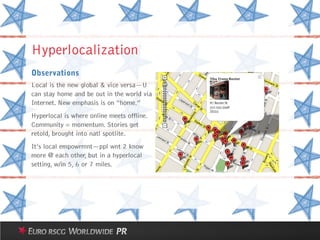


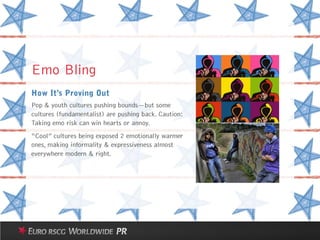
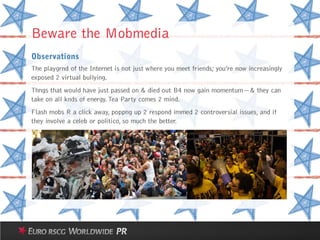
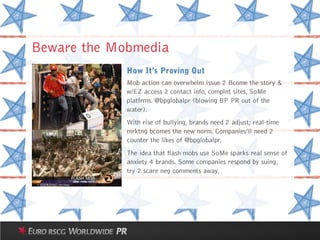
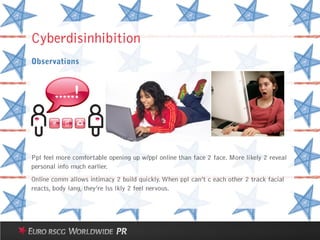
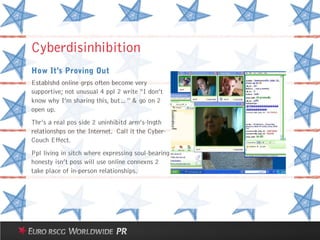
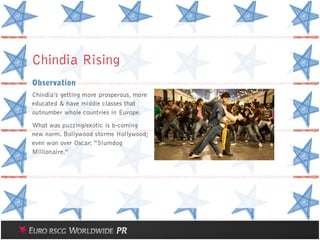
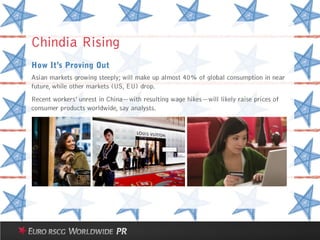
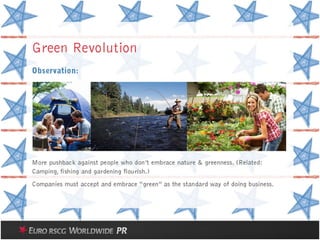
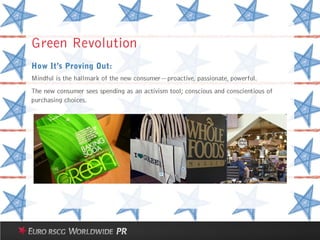


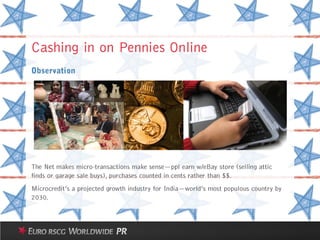


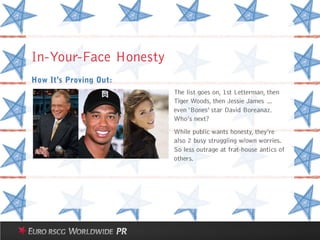
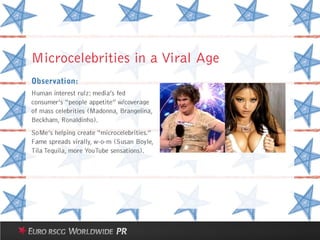

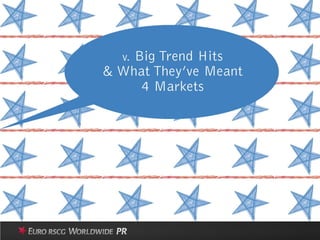


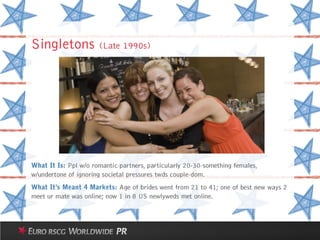
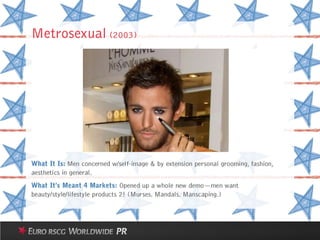
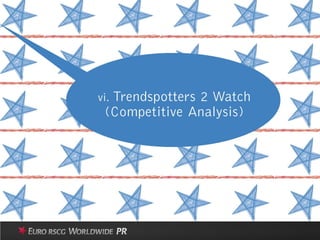
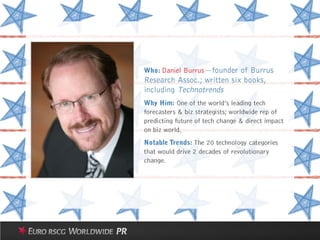
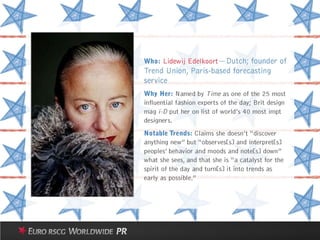
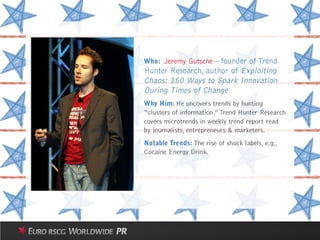
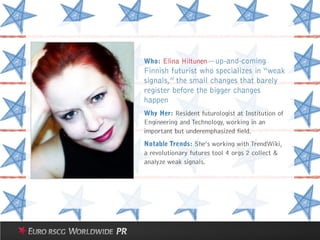
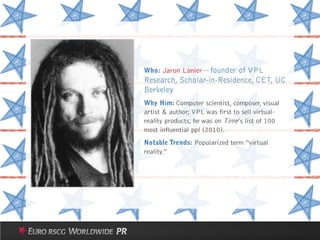
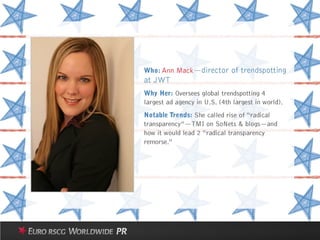


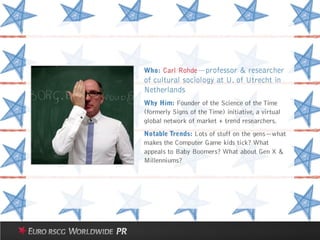
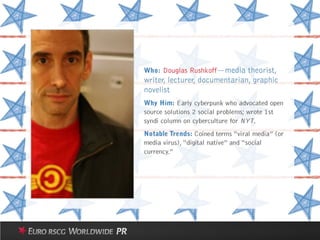
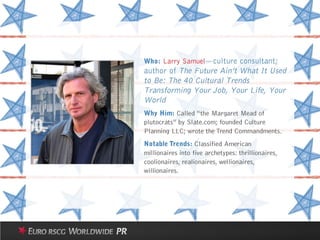

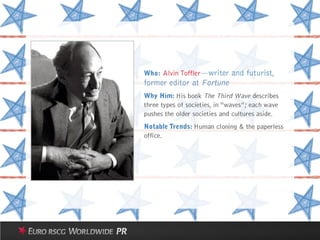
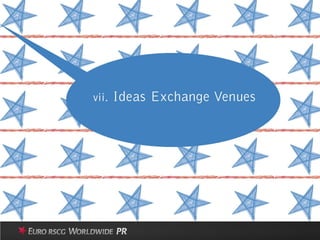
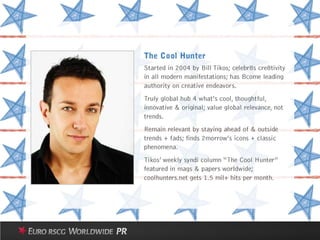


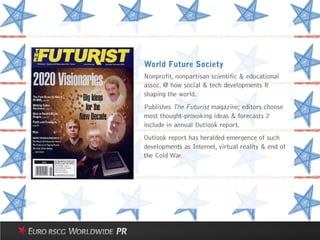
Ad
Recommended
ABC Training for Business People
ABC Training for Business PeopleShamier Nahine
╠²
This document provides guidance for professional conduct in a business setting. It discusses expectations around dress code, cell phone usage, etiquette, office conduct, and networking. Specific tips are provided such as dressing professionally for client meetings, keeping your phone on vibrate in meetings, following up after interactions, and introducing people at networking events. The document emphasizes being on time, communicating respectfully, showing integrity and reliability, and supporting your colleagues.Short CV
Short CVPubali Dhar
╠²
This document provides a biography for Dr. Pubali Dhar, an Associate Professor in Physiology at the University of Calcutta. It outlines her educational background, work experience, research projects, publications, awards, and areas of research expertise which include lipid biochemistry, lipid nutrition, and antioxidants. She has over 15 years of teaching experience and her research focuses on the health effects of lipids and natural products. She has supervised several PhD students and published numerous papers in her field.Male in the USA
Male in the USAHavasPR
╠²
This document summarizes realities about men in the United States based on statistics and data. It notes that the US population continues to grow through births and immigration, making it more ethnically diverse. While men on average still earn more than women, the gap is closing as more women get college degrees and high-paying jobs. However, rising costs and debt have created an illusion of prosperity for many. Most Americans now make under $50,000 annually and cannot maintain spending levels without borrowing. Overall wealth remains concentrated among the top earners.Act10 grupo29Raul Avellaneda
╠²
Este documento presenta un trabajo colaborativo sobre pensamiento sist├®mico realizado por dos estudiantes de la UNAD. El objetivo principal fue interiorizar los temas de la unidad sobre pensamiento sist├®mico mediante la aplicaci├│n de conceptos como modelo conceptual y CATWOE a un ejemplo. Se explican conceptos clave como los principios de Peter Senge y la metodolog├Ła general del pensamiento sist├®mico. Finalmente, se concluye que el trabajo permiti├│ aclarar los conceptos vistos y su interrelaci├│n para construir una estrategia sist├®mica a trav├®s de un ejMarketing Strategy
Marketing StrategyGaurav Narnaware
╠²
Aura Motors is introducing the SPUNK scooter to target young males and expand its market share beyond its current DIVA scooter brand that appeals to females. The SPUNK will have special features like self-start, mobile charging, and a metallic look to attract enthusiasts. Aura Motors will promote SPUNK through a clothing line, vintage posters, models, sales offers like discounts and EMIs, and a media mix including outdoor, print, radio, and social media advertising. The goal is for SPUNK to appeal to people seeking low fuel costs and customizability in an affordable two-wheeler.Mha 690 discussion 2 Seynabou
Mha 690 discussion 2 SeynabouSeynaboundiaye
╠²
This document discusses health information security and privacy challenges. It covers the passage of HIPAA in 1996 to protect patient privacy and the challenges of managing health information systems, such as security, data access, and lack of interoperability. Recommendations include establishing security policies, training employees on HIPAA compliance, and using technical solutions like role-based access control and encryption. The conclusion emphasizes that while new technologies benefit healthcare, privacy and security must be ensured.Green Banking and Sustainability
Green Banking and Sustainability Shamier Nahine
╠²
This document discusses IDLC Finance Limited's focus on green banking and sustainability. It outlines IDLC's vision to be the best financial brand in Bangladesh through quality growth, superior customer experience, and sustainable business practices. Some of IDLC's strategic objectives toward this vision include growing its talent pool, leveraging its new core banking platform, and financing various green projects like tunnel kilns, zigzag brick kilns, effluent treatment plants, waste recycling plants, biogas plants, and solar home systems. The document also discusses IDLC's sustainability focus on human rights, community development, anti-corruption, and the environment through awareness campaigns and green technologies.Why Mass Dropped Dead
Why Mass Dropped DeadHavasPR
╠²
Havas PR CEO, Marian Salzman's presentation at the Advertising Educational Foundation Annual Symposium on October 3, 2013 7 Trends to Watch in 2012
7 Trends to Watch in 2012HavasPR
╠²
The document discusses 7 trends to watch in 2012:
1. People power and social media empowering both individuals and large organizations.
2. The always connected millennial generation reshaping notions of time and place.
3. Increased focus on privacy as people limit what they share online.
4. The rise of hyperlocal and location-based content and apps while universal interests remain.
5. PR professionals needing a wide range of skills to adapt to changing media landscapes.
6. Fragmented approaches to health and wellness combining scientific and alternative approaches.
7. A turn toward optimism and hopeful stories to boost consumer sentiment.What's Next for Western Europe
What's Next for Western EuropeHavasPR
╠²
This document discusses six key trends in Western Europe: 1) Continuing optimism despite economic crises, with companies focusing on culture and communities. 2) Growing austerity and frugality as lavish consumption declines. 3) Embracing imperfection over perfection. 4) Increasing urbanization as cities offer opportunities. 5) Addressing climate change through weather prediction and dealing with effects. 6) Sustained luxury market through technology and temporary pop-up stores.10 Trends in Advertising and PR
10 Trends in Advertising and PRHavasPR
╠²
The document discusses emerging trends in advertising and public relations that emphasize the need for businesses to adapt and innovate in a rapidly changing landscape. Key trends include the hybridization of PR roles, the importance of creating engaging content, and the shifting dynamics created by technology and local-global interactions. It highlights the growing relevance of interactive and hopeful storytelling in PR, along with the challenges posed by changing consumer behaviors and preferences.Deciphering Consumer Trends and Their Impact on the Outdoor Industry
Deciphering Consumer Trends and Their Impact on the Outdoor IndustryHavasPR
╠²
The document discusses consumer trends and their implications for the outdoor industry, highlighting the necessity of understanding these trends to develop effective brand strategies. Key trends include the need for reassurance in outdoor activities, the integration of technology and connectivity in outdoor experiences, and the increasing significance of sustainability and water resources. The author emphasizes the importance of adapting to consumer behaviors and fostering a hands-on approach to engagement with the outdoors.Meet the New Social: Ten Trends and Beyond
Meet the New Social: Ten Trends and BeyondHavasPR
╠²
Trendspotting presentation given by Havas PR CEO, Marian Salzman, on January 26, 2011 to the Fairfield County Public Relations Association.Health, Media and Marketing: Trends for 2014
Health, Media and Marketing: Trends for 2014HavasPR
╠²
The document discusses key health, media, and marketing trends expected for 2014, emphasizing the importance of recognizing and analyzing trends to drive future strategies. Notable predictions include a shift in healthcare towards long-term life care, advancements in technology enabling home monitoring, and transformations in media consumption due to mobile devices. Additionally, it highlights the significance of big data, mobile marketing, and changes in consumer behavior that will influence brand marketing.Strategic Thought Starters for the Near Future
Strategic Thought Starters for the Near FutureHavasPR
╠²
Trendspotting presentation given by Havas PR CEO, Marian Salzman, to the National Association of Realtors on February 1, 2011Trends 2013
Trends 2013HavasPR
╠²
The document discusses several trends that may emerge in the future, including:
1. Life apprenticeships from ages 19-29 to prepare for lifelong reinvention.
2. Domestic partnerships formed for healthcare and tax benefits.
3. Homeschooling increasing through online resources and social media.
4. Monitoring fatigue as an increasingly discussed condition.The Age of the State of the Social Mind
The Age of the State of the Social MindHavasPR
╠²
Havas PR presentation on social media's implicationsReputation Management
Reputation ManagementHavasPR
╠²
The document discusses the importance of CEO reputation and personal branding in the business world. It emphasizes that attention-seeking behaviors are crucial for media and corporate visibility, suggesting that CEOs should strengthen their narratives and authenticity. Additionally, it explores the need for personal branding, asserting that CEOs must adapt to leverage their reputations effectively.Real Time Creativity
Real Time CreativityHavasPR
╠²
The document discusses how technology and social media have transformed the landscape of storytelling and journalism, emphasizing the rise of real-time content and the blurring of fictional and non-fictional narratives. It highlights the importance of engaging and imperfect content, personal branding, and participatory reporting, showcasing how citizen journalism and social media have changed news dissemination. The need for creativity in crafting and reshaping news is also stressed, acknowledging the inevitability of leaks in the 21st-century media environment.Millenials As Consumers
Millenials As ConsumersHavasPR
╠²
The document discusses millennials, a global generation characterized by their age range of approximately 18 to 34, diverse backgrounds, and distinct shopping behaviors influenced by economic factors. They exhibit cautious spending habits, seeking value and authenticity in brands while also valuing social responsibility, and they heavily rely on mobile technology for product research and purchasing decisions. As the largest cohort in the U.S., their preferences will significantly affect retail strategies and marketing approaches.How Social is Redefining Business
How Social is Redefining BusinessHavasPR
╠²
Marian Salzman (Havas PR CEO) presentation given at the Echo Academy of Direct Marketing and Sciences.Gender Reboot
Gender RebootHavasPR
╠²
This document summarizes trends in gender roles and relationships in 2011. It discusses how millennials have different views of gender than previous generations. Both men and women are redefining traditional roles at home and in the workplace. While gender stereotypes are breaking down, finding happiness and love remain high priorities for many.2020 Trends
2020 TrendsHavasPR
╠²
The document discusses various macro trends that are expected to impact the world over the next decade, focusing on issues like environmental concerns, health risks of emerging technologies, and the significance of hyperlocal media. It highlights the potential business opportunities presented by these trends, such as the demand for water-efficient products and the evolution of social interactions through technology. Overall, the piece emphasizes the need for businesses to adapt and innovate in response to these societal shifts.15 Trends for Marketing to Women Worldwide
15 Trends for Marketing to Women WorldwideHavasPR
╠²
1. The document discusses 15 trends related to marketing to women around the world. It focuses on trends in the Gulf region as well as worldwide.
2. Some of the key trends discussed include: the growing perception that society has become too obsessed with youth; more women obtaining higher education globally and becoming smarter faster than men; and an increasing number of single women ("singletons") choosing to not marry or have families, especially in Western countries.
3. The document provides analysis of each trend and implications for marketers, emphasizing the need to recognize changing demographics and address the anxieties and values of women consumers.10 Trends for Bicycle Culture
10 Trends for Bicycle CultureHavasPR
╠²
The document outlines ten trends for the future of cycling, focusing on health, technology, consumer behavior, and environmental consciousness. It emphasizes the importance of trendspotting to identify opportunities for bicycle retailers and suggests ways to engage with consumers to promote cycling. Overall, it argues that bicycles are well-positioned to meet evolving consumer needs and contribute to a social revolution centered on healthier and more sustainable lifestyles.What's Next for Western Europe
What's Next for Western EuropeHavasPR
╠²
April 2012: Marian Salzman (Havas PR CEO) speech given at Eller College of Management, University of Arizona. Spots five key trends for Western Europe by examining various criteria.The Teenage Girl as Consumer and Communicator
The Teenage Girl as Consumer and CommunicatorHavasPR
╠²
The document discusses findings from a survey of 100 American teenage girls aged 13 to 18 conducted in November 2009. Some key findings include:
- Teenage girls spend purposefully online, knowing what they are looking for, which is mainly keeping in touch with friends through social media.
- They are selective about what brands and trends they follow and prefer to actively seek out sales and deals from brands rather than being passively marketed to.
- They share new brand or shopping information mainly through one-on-one communication like texting rather than broadcasting on social media. Intimacy with a small circle of close friends is important.
- They prefer to shop in physical stores so they can see and touch items, and enjoyMore Related Content
More from HavasPR (20)
Why Mass Dropped Dead
Why Mass Dropped DeadHavasPR
╠²
Havas PR CEO, Marian Salzman's presentation at the Advertising Educational Foundation Annual Symposium on October 3, 2013 7 Trends to Watch in 2012
7 Trends to Watch in 2012HavasPR
╠²
The document discusses 7 trends to watch in 2012:
1. People power and social media empowering both individuals and large organizations.
2. The always connected millennial generation reshaping notions of time and place.
3. Increased focus on privacy as people limit what they share online.
4. The rise of hyperlocal and location-based content and apps while universal interests remain.
5. PR professionals needing a wide range of skills to adapt to changing media landscapes.
6. Fragmented approaches to health and wellness combining scientific and alternative approaches.
7. A turn toward optimism and hopeful stories to boost consumer sentiment.What's Next for Western Europe
What's Next for Western EuropeHavasPR
╠²
This document discusses six key trends in Western Europe: 1) Continuing optimism despite economic crises, with companies focusing on culture and communities. 2) Growing austerity and frugality as lavish consumption declines. 3) Embracing imperfection over perfection. 4) Increasing urbanization as cities offer opportunities. 5) Addressing climate change through weather prediction and dealing with effects. 6) Sustained luxury market through technology and temporary pop-up stores.10 Trends in Advertising and PR
10 Trends in Advertising and PRHavasPR
╠²
The document discusses emerging trends in advertising and public relations that emphasize the need for businesses to adapt and innovate in a rapidly changing landscape. Key trends include the hybridization of PR roles, the importance of creating engaging content, and the shifting dynamics created by technology and local-global interactions. It highlights the growing relevance of interactive and hopeful storytelling in PR, along with the challenges posed by changing consumer behaviors and preferences.Deciphering Consumer Trends and Their Impact on the Outdoor Industry
Deciphering Consumer Trends and Their Impact on the Outdoor IndustryHavasPR
╠²
The document discusses consumer trends and their implications for the outdoor industry, highlighting the necessity of understanding these trends to develop effective brand strategies. Key trends include the need for reassurance in outdoor activities, the integration of technology and connectivity in outdoor experiences, and the increasing significance of sustainability and water resources. The author emphasizes the importance of adapting to consumer behaviors and fostering a hands-on approach to engagement with the outdoors.Meet the New Social: Ten Trends and Beyond
Meet the New Social: Ten Trends and BeyondHavasPR
╠²
Trendspotting presentation given by Havas PR CEO, Marian Salzman, on January 26, 2011 to the Fairfield County Public Relations Association.Health, Media and Marketing: Trends for 2014
Health, Media and Marketing: Trends for 2014HavasPR
╠²
The document discusses key health, media, and marketing trends expected for 2014, emphasizing the importance of recognizing and analyzing trends to drive future strategies. Notable predictions include a shift in healthcare towards long-term life care, advancements in technology enabling home monitoring, and transformations in media consumption due to mobile devices. Additionally, it highlights the significance of big data, mobile marketing, and changes in consumer behavior that will influence brand marketing.Strategic Thought Starters for the Near Future
Strategic Thought Starters for the Near FutureHavasPR
╠²
Trendspotting presentation given by Havas PR CEO, Marian Salzman, to the National Association of Realtors on February 1, 2011Trends 2013
Trends 2013HavasPR
╠²
The document discusses several trends that may emerge in the future, including:
1. Life apprenticeships from ages 19-29 to prepare for lifelong reinvention.
2. Domestic partnerships formed for healthcare and tax benefits.
3. Homeschooling increasing through online resources and social media.
4. Monitoring fatigue as an increasingly discussed condition.The Age of the State of the Social Mind
The Age of the State of the Social MindHavasPR
╠²
Havas PR presentation on social media's implicationsReputation Management
Reputation ManagementHavasPR
╠²
The document discusses the importance of CEO reputation and personal branding in the business world. It emphasizes that attention-seeking behaviors are crucial for media and corporate visibility, suggesting that CEOs should strengthen their narratives and authenticity. Additionally, it explores the need for personal branding, asserting that CEOs must adapt to leverage their reputations effectively.Real Time Creativity
Real Time CreativityHavasPR
╠²
The document discusses how technology and social media have transformed the landscape of storytelling and journalism, emphasizing the rise of real-time content and the blurring of fictional and non-fictional narratives. It highlights the importance of engaging and imperfect content, personal branding, and participatory reporting, showcasing how citizen journalism and social media have changed news dissemination. The need for creativity in crafting and reshaping news is also stressed, acknowledging the inevitability of leaks in the 21st-century media environment.Millenials As Consumers
Millenials As ConsumersHavasPR
╠²
The document discusses millennials, a global generation characterized by their age range of approximately 18 to 34, diverse backgrounds, and distinct shopping behaviors influenced by economic factors. They exhibit cautious spending habits, seeking value and authenticity in brands while also valuing social responsibility, and they heavily rely on mobile technology for product research and purchasing decisions. As the largest cohort in the U.S., their preferences will significantly affect retail strategies and marketing approaches.How Social is Redefining Business
How Social is Redefining BusinessHavasPR
╠²
Marian Salzman (Havas PR CEO) presentation given at the Echo Academy of Direct Marketing and Sciences.Gender Reboot
Gender RebootHavasPR
╠²
This document summarizes trends in gender roles and relationships in 2011. It discusses how millennials have different views of gender than previous generations. Both men and women are redefining traditional roles at home and in the workplace. While gender stereotypes are breaking down, finding happiness and love remain high priorities for many.2020 Trends
2020 TrendsHavasPR
╠²
The document discusses various macro trends that are expected to impact the world over the next decade, focusing on issues like environmental concerns, health risks of emerging technologies, and the significance of hyperlocal media. It highlights the potential business opportunities presented by these trends, such as the demand for water-efficient products and the evolution of social interactions through technology. Overall, the piece emphasizes the need for businesses to adapt and innovate in response to these societal shifts.15 Trends for Marketing to Women Worldwide
15 Trends for Marketing to Women WorldwideHavasPR
╠²
1. The document discusses 15 trends related to marketing to women around the world. It focuses on trends in the Gulf region as well as worldwide.
2. Some of the key trends discussed include: the growing perception that society has become too obsessed with youth; more women obtaining higher education globally and becoming smarter faster than men; and an increasing number of single women ("singletons") choosing to not marry or have families, especially in Western countries.
3. The document provides analysis of each trend and implications for marketers, emphasizing the need to recognize changing demographics and address the anxieties and values of women consumers.10 Trends for Bicycle Culture
10 Trends for Bicycle CultureHavasPR
╠²
The document outlines ten trends for the future of cycling, focusing on health, technology, consumer behavior, and environmental consciousness. It emphasizes the importance of trendspotting to identify opportunities for bicycle retailers and suggests ways to engage with consumers to promote cycling. Overall, it argues that bicycles are well-positioned to meet evolving consumer needs and contribute to a social revolution centered on healthier and more sustainable lifestyles.What's Next for Western Europe
What's Next for Western EuropeHavasPR
╠²
April 2012: Marian Salzman (Havas PR CEO) speech given at Eller College of Management, University of Arizona. Spots five key trends for Western Europe by examining various criteria.The Teenage Girl as Consumer and Communicator
The Teenage Girl as Consumer and CommunicatorHavasPR
╠²
The document discusses findings from a survey of 100 American teenage girls aged 13 to 18 conducted in November 2009. Some key findings include:
- Teenage girls spend purposefully online, knowing what they are looking for, which is mainly keeping in touch with friends through social media.
- They are selective about what brands and trends they follow and prefer to actively seek out sales and deals from brands rather than being passively marketed to.
- They share new brand or shopping information mainly through one-on-one communication like texting rather than broadcasting on social media. Intimacy with a small circle of close friends is important.
- They prefer to shop in physical stores so they can see and touch items, and enjoy